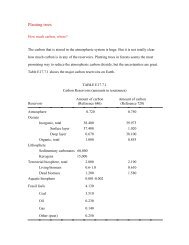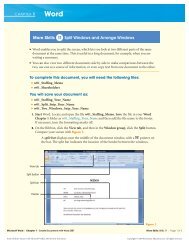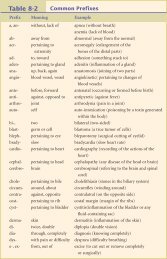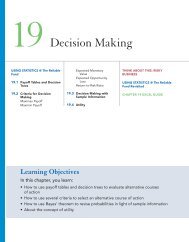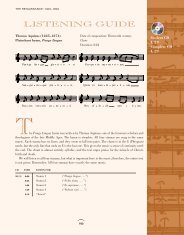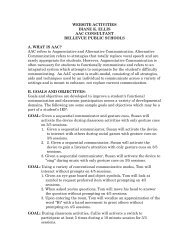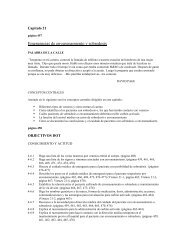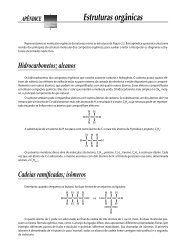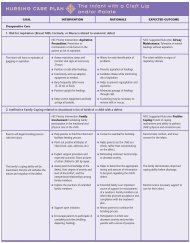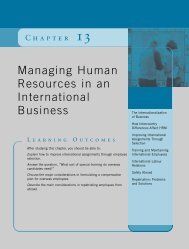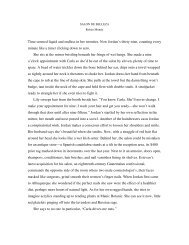chapter
chapter
chapter
Create successful ePaper yourself
Turn your PDF publications into a flip-book with our unique Google optimized e-Paper software.
206 Unit Three Forces Within<br />
when the Arabian Peninsula rifted from Africa, an event<br />
that began about 20 million years ago. Consequently,<br />
the Red Sea provides oceanographers with a view of<br />
how the Atlantic Ocean may have looked in its infancy.<br />
Not all rift valleys develop into full-fledged spreading<br />
centers. Running through the central United States is<br />
a failed rift extending from Lake Superior to Oklahoma.<br />
This once active rift valley is filled with volcanic rock that<br />
was extruded onto the crust more than a billion years ago.<br />
Why one rift valley develops into an active spreading center<br />
while others are abandoned is not yet known.<br />
Convergent Plate Boundaries<br />
EA R T H S C I E N C E<br />
Forces Within<br />
Plate Tectonics<br />
Although new lithosphere is constantly being added at<br />
the oceanic ridges, our planet is not growing larger—its<br />
total surface area remains constant. To accommodate<br />
Mid-Indian Ridge<br />
Southwest Indian Ridge<br />
Java (Sunda)<br />
Trench<br />
Philippine<br />
Trench<br />
Southeast Indian Ridge<br />
the newly created lithosphere, older portions of oceanic<br />
plates return to the mantle along convergent<br />
( con = together,<br />
vergere = to move)<br />
plate boundaries.<br />
(Because lithosphere is “destroyed” at convergent<br />
boundaries, they are also called destructive plate margins.)<br />
As two plates slowly converge, the leading edge<br />
of one is bent downward, allowing it to slide beneath<br />
the other. The surface expression produced by the descending<br />
plate is an ocean trench, like the Peru–Chile<br />
trench (Figure 7.12, on previous page). Trenches formed<br />
in this manner may be thousands of kilometers long, 8<br />
to 12 kilometers deep, and between 50 and 100 kilometers<br />
wide (Figure 7.13). Destructive plate margins where<br />
oceanic crust is being consumed in the mantle are called<br />
subduction ( sub = under,<br />
duct = lead)<br />
zones.<br />
The average angle at which oceanic lithosphere descends<br />
into the mantle is about 45 degrees. However,<br />
depending on its buoyancy, a plate might descend at<br />
an angle as small as a few degrees or it might plunge<br />
vertically (90 degrees) into the mantle. When a spreading<br />
center is located near a subduction zone, the litho-<br />
Japan Trench<br />
Kurile Trench<br />
Mariana Trench<br />
Aleutian Trench<br />
Bougainville Trench<br />
Alpine Fault<br />
Tonga Trench<br />
Kermadec Trench<br />
San Andreas<br />
Fault<br />
Figure 7.13 Distribution of the world’s oceanic trenches, ridge system, and transform faults. Where transform faults offset ridge<br />
segments, they permit the ridge to change direction (curve) as can be seen in the Atlantic Ocean.<br />
Central<br />
America<br />
Trench<br />
East Pacific Rise




